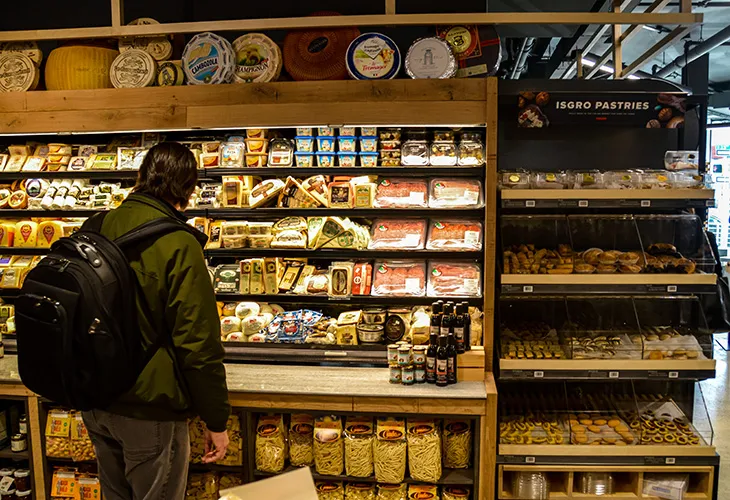How viable is it to sell premium specialty food, a process that requires a high level of knowledge and expertise, in the mass market? That conundrum was recently tackled by a small group of grocers from the northeastern U.S. and suppliers and officials representing the Emilia-Romagna region of Italy, an area known for prosciutto, Parmigiano Reggiano, prosciutto di Parma and traditional balsamic vinegar, among other agricultural products.
 During an afternoon of discussion — organized by Joe Bivona, executive director of the Academy of Food Marketing at St. Joseph’s University, and led by John Stanton, chairman of the school’s Food Marketing, Pharma and Healthcare department — the group wrestled with challenges involved in increasing the presence in American supermarkets of specialty food from Emilia-Romagna and other regions in Europe with a rich gastronomic tradition. To achieve that goal, retailers and suppliers (with, in this instance, financial support from the European Union) need to raise awareness and educate consumers about the characteristics that distinguish a given product, and why those factors justify a premium price. In-store personnel also have to be brought up to speed on those points, and taught what it takes to meet rigorous standards for handling such products and readying them for sale.
During an afternoon of discussion — organized by Joe Bivona, executive director of the Academy of Food Marketing at St. Joseph’s University, and led by John Stanton, chairman of the school’s Food Marketing, Pharma and Healthcare department — the group wrestled with challenges involved in increasing the presence in American supermarkets of specialty food from Emilia-Romagna and other regions in Europe with a rich gastronomic tradition. To achieve that goal, retailers and suppliers (with, in this instance, financial support from the European Union) need to raise awareness and educate consumers about the characteristics that distinguish a given product, and why those factors justify a premium price. In-store personnel also have to be brought up to speed on those points, and taught what it takes to meet rigorous standards for handling such products and readying them for sale.
The Protected Designation of Origin mark illustrates the obstacles that have to be overcome. Commonplace in the EU, PDO labels tell shoppers that a food product comes from a specific region, and is grown and processed according to time-honored local traditions. The panelists agreed that the PDO mark has little, if any, meaning for most Americans.
While food from Emilia-Romagna is a perfect fit for Di Bruno Bros., an iconic specialty grocer in Philadelphia, it is a heavier lift for the other retailers taking part in the discussion — the GIANT Co., Key Food and Brown’s Super Stores (which is part of the Wakefern Food Corp. cooperative).
Like other mass marketers, the three chains are expected to meet the needs of a broad range of consumers, many of whom are motivated, first and foremost, by price. High-end products are unlikely to appeal to such shoppers, but most of the participants in the discussion at St. Joseph’s indicated that, with the right merchandising and marketing support, specialty food can earn a place in the supermarket mix, rewarding retailers who crack the code with high margins and a reputation for helping customers expand their culinary horizons.






